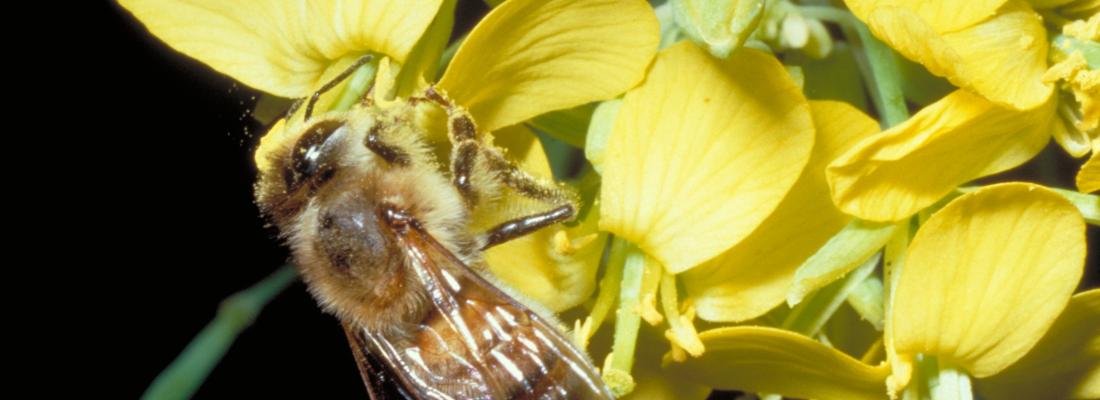Biodiversity Reading time 2 min
Bee pollination boosts the profitability of oilseed rape
Published on 09 October 2019

Studying the effects of pollination and pesticides on crop yields and farmer revenues
Can we reduce agrochemical inputs without impacting yields and farmers’ incomes? Sustainable agroecology relies on maximizing the replacement of agrochemicals by natural capital and ecosystem functions, while minimizing the reduction in yield and increasing farm profitability. There is evidence that crops dependent on pollinators, such as rapeseed or sunflower, produce higher yields in the presence of high density of pollinators, especially bees. But in conventional agricultural fields, the use of pesticides such as insecticides and herbicides, to reduce crop pests and disease, also have direct (mortality) and indirect (decrease in floral resources) effects on pollinators. Although pollination is one of the most evaluated services, the effects of the interactions between pollination and the use of pesticides on yields and farmers’ incomes have never been studied.
Pollination positively impacts farmer's income
The scientists quantified the individual and combined effects of pesticides, insect pollination, and soil quality on oilseed rape (Brassica napus L.) yield and gross margins on a sample size of 85 to 294 fields in the Zone Atelier “Plaine & Val de Sèvre” from 2013 to 2016. The study revealed an increase in yield and gross margin (on average 15%, €119/ha, and up to 40%, €289/ha) in fields with maximum pollinator abundance compared to fields with virtually no pollinators. However, this effect is greatly reduced by the use of pesticides. Analyses of the effects of pesticides (herbicides and insecticides) on the one hand, and pollination by bees on the other hand, show that both strategies can achieve high yields, but only pollination by bees can lead to higher economic income. This is due to the lack of costs of nature-based solutions compared to pesticides, and the latter do not increase yields enough to offset their costs.
This new study suggests that agroecology, which promotes nature-based solutions for agricultural production, can be an alternative “win-win” model that ensures agricultural production, incomes for farmers, and environmental protection.
Bee pollination outperforms pesticides for oilseed crop production and profitability. Rui Catarino, Vincent Bretagnolle, Thomas Perrot, Fabien Vialloux & Sabrina Gaba, Proceedings of the Royal Society London B - 9 octobre 2019
https://doi.org/10.1098/rspb.2019.1550
